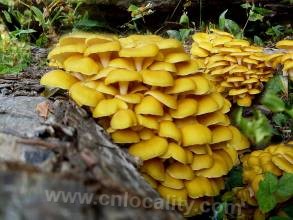welcomeSpecialty Foods Products!

Pleurotus eryngii, Pleurotus eryngii, Pleurotus eryngii; It belongs to Basidiomycotina, Laminaria, Agaricus, Tricholomataceae, Pleurotus. Morphological characteristics: the fruiting bodies of Pleurotus citrinopileatus are mostly clustered or clustered, showing golden yellow. The mushroom cap is trumpet-shaped, smooth, 2-10 cm wide, fleshy, with rolled edges and white mushroom meat. The bacterial folds are white, elongated, slightly dense and unequal in length. The stipe is white to light yellow, which is partial, 2-12 cm long and 0.5-1.5 cm thick with fine hairs; Most fruiting bodies live together, and the Pleurotus citrinopileatus is golden in color, gorgeous and attractive, and looks like a beautiful flower. Nutritional components: Pleurotus citrinopileatus is delicious and rich in nutrients, including protein, vitamins and minerals, especially rich in amino acids and high in essential amino acids. It is a high-nutrition, low-calorie food, which has the functions of lowering blood pressure and cholesterol content after long-term consumption, and is an ideal health food for elderly patients with cardiovascular diseases and obesity. It can be used as medicine to treat weakness (muscle weakness) and dysentery. Cultivation requirements of Pleurotus citrinopileatus: Pleurotus citrinopileatus has strong growth ability, fast fruiting, short growth period and high yield, and can be cultivated by cutting wood or bagging materials. Its mycelium has strong viability, and it can grow and develop on sawdust media of broad-leaved trees such as elm, poplar, birch, linden, Fraxinus mandshurica and Sophora japonica, and also on Korean pine, Sha Song, fish scales pine, Chinese fir and cypress. It can also grow and develop on cottonseed hull, waste cotton, corncob, peanut hull, bean hull, wheat straw, rice straw, tea residue and waste culture materials planted with straw mushrooms and mushrooms. Among them, the yield of Pleurotus citrinopileatus cultivated with cottonseed hull, waste cotton and corncob is higher. The temperature range of mycelium growth and development is 7-32℃, and the optimum growth temperature is 23-27℃. The mycelium will die after 2 hours above 45℃, but it can tolerate the low temperature of-38℃. The fruiting body formation temperature is 10-28℃, and the optimum growth temperature is 15-25℃. It can grow at pH5-7, and pH5-6.5 is the most suitable. How to eat: it can be fried, exploded, burned, grilled and stewed. It tastes delicious and tender. Can be fried with lean meat, pickled vegetables, bamboo shoots, ham meat, belly slices, or put into meat to make soup.
Reprinted with attribution:
https://cnlocality.com/(Chinese Specialty Products)
other
consult:(+86)13225231905